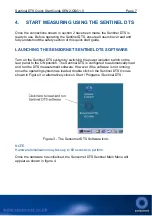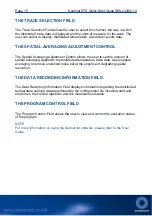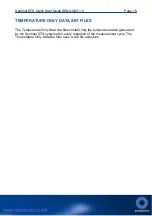
Sentinal DTS Quick Start Guide SEN2-QSG1.0
Page 11
6.
CREATING CONFIGURATION FILES
To enable the Sentinel DTS system to accurately sense distributed temperature, it
is important that the correct configuration file is chosen. First time users should use
the factory set configuration values pre-loaded. This allows the user to gain
experience and become familiar with making temperature measurements using the
Sentinel DTS. To load the last configuration file and begin measurements, click the
Start Measurement button.
As you gain experience you should either load and edit a configuration file or create
a new one using the configuration wizard. To do this, click on the Edit Configuration
button in the Sensornet DTS Sentinel Main Menu and select Go Straight to Editor or
Run Configuration Wizard.
The following parameters can be set when creating configuration files.
LENGTH CORRECTION
When creating or editing a configuration file, length correction can be applied. This
is used to correct for dispersion within the fibre cable and ensure both the stokes
and anti-stokes data are range calibrated. This is normally performed by referencing
to the end of the optical fibre and adjusting the displayed trace to match stokes and
anti-stokes data. The default values should be correct in most cases.
MEASUREMENT RANGE
The measurement range allows the user to limit the amount of distributed
temperature sensing data to a useful minimum. Meaningless data is generated
beyond the end of the installed fibre length and appears as very large noise spikes
on the distributed temperature trace. Reducing the measurement range to the last
point of interest along the optical fibre can remove this ‘noise’ from the trace and
help to reduce data file sizes.
























